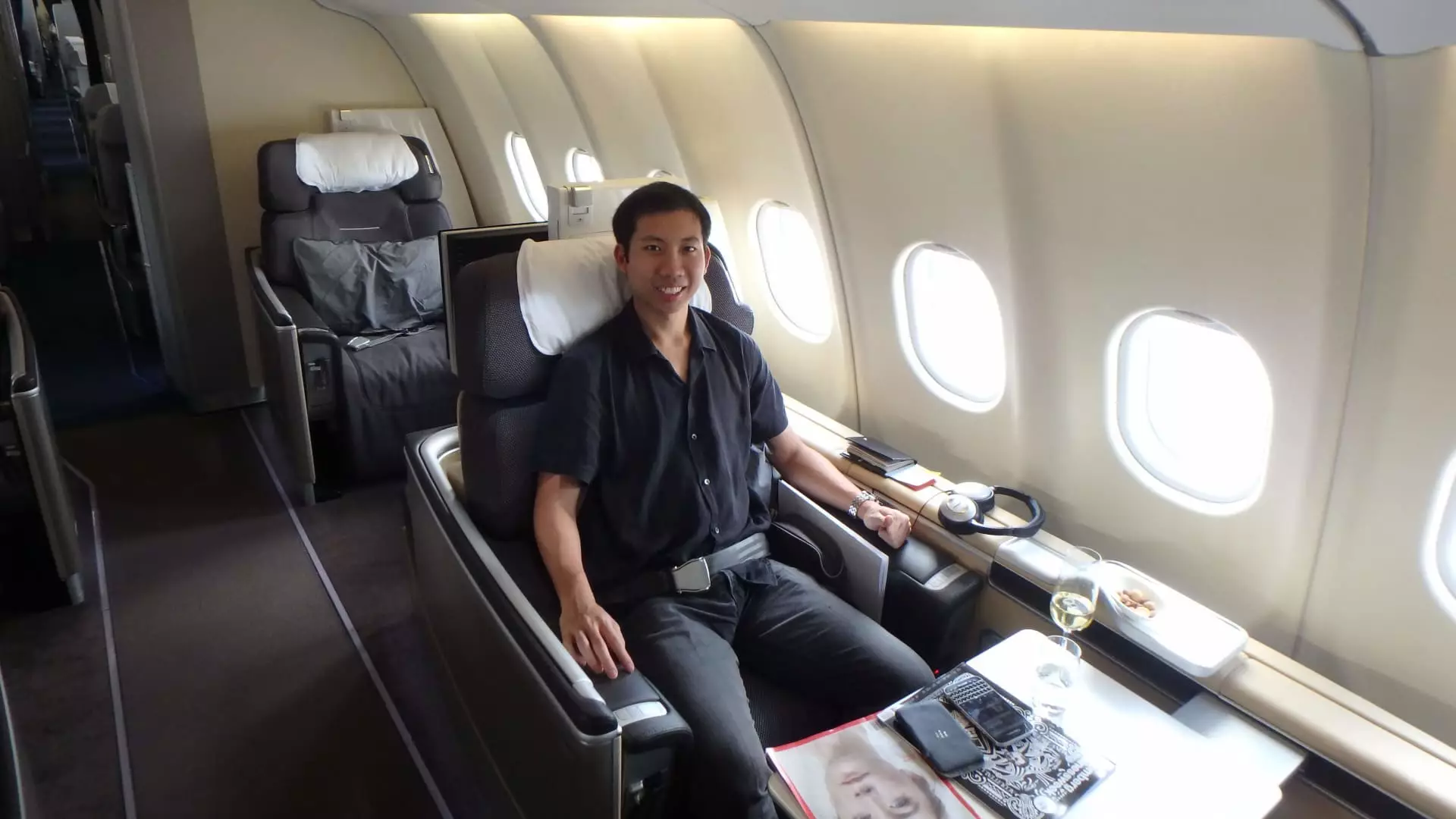Traveling in business or first class represents a pinnacle of comfort and luxury, often reserved for those with the financial means or professional necessity to indulge in such experiences. The soaring costs of these premium seats can deter many travelers, making the journey feel like a privileged endeavor. However, there are strategies to experience this luxury without breaking the bank.
For many, the allure of business and first-class seating is overshadowed by their steep prices. Take Singapore Airlines, for example: while a round-trip economy class ticket from Singapore to London can be purchased for about 1,700 Singapore dollars (approximately $1,303.68), a business class ticket jumps dramatically to SG$6,300, and first-class accommodations can exceed SG$13,000. This staggering increase often limits these premium seats to affluent business travelers or the elite.
Interestingly, on shorter flights, this price discrepancy may not always be as severe. A round trip from Singapore to Tokyo might only set you back SG$1,300 for economy, but it still rises to just over SG$4,200 for business and approximately SG$7,600 for first class. It is evident that the ticket price can influence the decision-making of many travelers, often leading them to stick with economy options.
One traveler, Aaron Wong, who transitioned from management consulting to founding the travel site The MileLion, has cracked the code for flying in premium classes without the burden of inflated costs. Wong has a solid plan: utilizing credit card points to earn airline miles. By aligning his credit card choices with his spending habits, he has been able to maximize the rewards he receives.
This leads us to an essential take-away: there is no one-size-fits-all credit card that guarantees the best benefits. Rather, it is prudent for “miles chasers” to select multiple credit cards. Wong suggests having several cards that correspond to various spending categories—some for dining, others for groceries, and so on. The goal is to earn bonus miles, which can significantly elevate the total accumulated miles due to favorable multiplier effects, reaching rates as high as four miles per dollar spent.
The financial implications of using the right credit card are profound. For instance, consider a $30,000 expenditure on a standard card earning 1.4 miles per dollar. One would accumulate around 45,000 miles—possibly enough for a round trip to Perth in economy class. In contrast, if those same expenses were distributed across cards yielding bonus miles, it could result in an impressive 120,000 miles—equivalent to a business class ticket to Cape Town.
Wong’s analogy serves as a valuable lesson: choosing the appropriate card is akin to selecting the right tool for a specific task. Trying to open a bottle of wine with a beer opener simply won’t yield desired results. This approach emphasizes the importance of informed spending, and often the missed opportunities that come with using suboptimal cards.
However, it’s crucial to navigate the complexities that accompany miles programs. Unlike straightforward cashback cards, which provide a clear percentage back on purchases, the miles system requires more diligence. Wong highlights that potential credit card users should understand the specifics—bonus rates, expirations, and pooling points from different banks can all complicate matters.
In Singapore, for example, points earned through certain card issuers can often be consolidated, while others cannot. Additionally, one must remain vigilant about whether their rewards will expire and how points translate into airline miles, as different cards can have different redemption pathways.
Wong acknowledges that the miles chase can seem overwhelming, often seeming reserved for those willing to juggle numerous credit cards. Yet, he reassures potential travelers that three or four cards are typically adequate for most people, provided they do not engage in excessive spending just to chase miles.
The key is understanding that accumulating miles should not come at the cost of financial prudence. Wong himself does not advocate overspending simply to earn rewards and stresses that smart management is essential. Travelers can still unlock luxurious experiences without incurring the heavy price tags usually associated with business and first-class travel.
Wong’s story illustrates a broader concept: with diligence and smart planning, attaining the luxurious experience of flying business or first class is increasingly attainable. The thrill of flying at the front of the aircraft, with plush seats, gourmet meals, and exclusive lounges, may seem elusive, but savvy travelers can make it their reality. So, for those ready to dive into the intricacies of airline miles and credit cards, the rewards can be substantial, making air travel not only more enjoyable but also much more accessible.


Napsat komentář